Embibe Experts Solutions for Chapter: Ray Optics, Exercise 3: Exercise-3
Embibe Experts Physics Solutions for Exercise - Embibe Experts Solutions for Chapter: Ray Optics, Exercise 3: Exercise-3
Attempt the practice questions on Chapter 30: Ray Optics, Exercise 3: Exercise-3 with hints and solutions to strengthen your understanding. Alpha Question Bank for Medical: Physics solutions are prepared by Experienced Embibe Experts.
Questions from Embibe Experts Solutions for Chapter: Ray Optics, Exercise 3: Exercise-3 with Hints & Solutions
A beam of light consisting of red, green and blue colours is incident on a right angled prism. The refractive index of the material of the prism for the above red, green and blue wavelengths are and respectively.
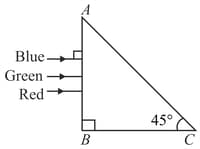
The prism wil:
A transparent solid cylindrical rod has a refractive index of . It is surrounded by air. A light ray is incident at the mid-point of one end of the rod as shown in the figure.

The incident angle for when the light ray grazes along the wall of the rod is:
The graph between angle of deviation and angle of incidence (i) for a triangular prism is represented by:
Monochromatic light is incident on a glass prism of angle . If the refractive index of the material of the prism is , a ray, incident at an angle $\theta$, on the face would get transmitted through the face of the prism provided.
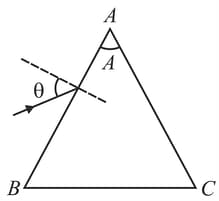
Consider a tank made of glass (refractive index ) with a thick bottom. It is filled with a liquid of refractive index A student finds that, irrespective of what the incident angle (see figure) is for a beam of light entering the liquid, the light reflected from the liquid glass interface is never completely polarized. For this to happen, the minimum value of is:

What is the position and nature of the image formed by the lens combination shown in the figure? are focal lengths)
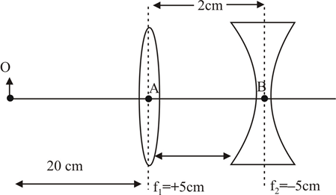
A point source of light is placed at a distance in front of the centre of plane mirror of width d which is hanging vertically on a wall. A man walks in front of the mirror along a line parallel to the mirror, at a distance as shown below. The distance over which the man can see the image of the light source in the mirror is
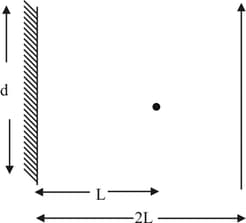
Formation of real image using a biconvex lens is shown below.
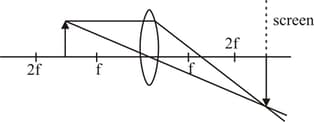
If the whole set up is immersed in water, what will one observe
